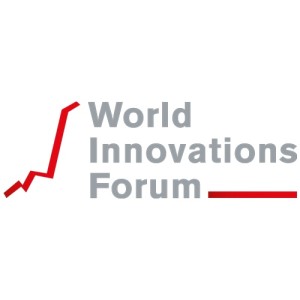Ageing Society – Impact on Innovation
The age pyramid, or demographic distribution of a population by age groups, can influence innovation trends and the types of innovations that are prioritized in society. It is expected that shifts in the age pyramid will have an impact on potential innovations. We have identified a number of business sectors that will likely see a growing potential for innovations.
Healthcare and Medical Technologies
Ageing Population: With an increasing proportion of elderly individuals in the population, there is likely to be a focus on healthcare innovations catering to age-related diseases and conditions. This includes advancements in geriatric care, assistive technologies, telemedicine, and personalized medicine.
Senior Living and Housing Solutions
Age-Friendly Housing: As the elderly population grows, there may be innovations in age-friendly housing solutions. This includes smart homes equipped with technologies that enhance accessibility, safety, and overall well-being for seniors.
Digital Technologies for Older Adults
Tech for Seniors: Innovations in technology tailored for older adults, such as user-friendly interfaces, health monitoring apps, and communication tools, may become more prevalent. This aims to enhance connectivity, social engagement, and health management for seniors.
Mobility Solutions
Elderly Transportation: The ageing population may drive innovations in transportation solutions that cater to the needs of seniors. This could include autonomous vehicles, ride-sharing services designed for seniors, and improved public transportation accessibility.
Financial Technology for Retirement Planning
Retirement Planning Tools: Innovations in financial technology may focus on developing tools and platforms to assist individuals in planning for retirement, managing pensions, and ensuring financial security in old age.
Elderly Care and Social Services
In-Home Care Technologies: Innovations in in-home care services, robotics, and artificial intelligence may provide support for caregivers and improve the quality of care for the elderly.
Education Technology for Lifelong Learning
Lifelong Learning Platforms: As individuals live longer and continue to work beyond traditional retirement ages, there may be innovations in education technology that cater to lifelong learning and skill development for older adults.
Silver Economy
Products and Services for Seniors: The “Silver Economy” refers to the economic opportunities associated with the elderly population. Innovations in products and services targeting seniors, such as fashion, travel, and leisure, may see growth.
Healthy Ageing and Wellness
Wellness Technologies: Innovations in wellness technologies, including fitness trackers, health monitoring devices, and preventive healthcare solutions, may cater to the desire for healthy ageing and active lifestyles.
Intergenerational Collaboration
Intergenerational Innovation Spaces: Recognizing the value of diverse perspectives, there may be innovations in creating collaborative spaces that bring together individuals of different age groups for idea generation and problem-solving.
Social Robotics and Companionship
Robotic Companions: Innovations in social robotics may lead to the development of companion robots designed to provide social interaction, assistance, and support, particularly for individuals experiencing loneliness or isolation.
Environmental and Sustainable Innovations
Sustainable Ageing Communities: Innovations in sustainable practices within ageing communities, including energy-efficient housing, eco-friendly transportation, and waste reduction, may become more prominent.
The above list is not exhaustive. In addition to the topics mentioned, there are several other fields of innovation that are developing in connection with an ageing society. From an economic point of view, great opportunities will arise with the successful marketing of the innovations described.



